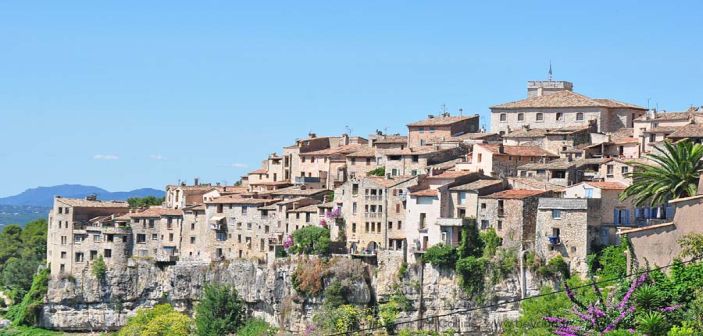The village, dominated by the Courmettes peak reaching 1248 meters, is itself situated at an altitude of 400 meters. Tourrettes is located at the entrance of the Loup gorges, an inevitable stop for tourists before embarking on the visit of the gorges with the Saut du Loup waterfall.
Tourrettes sur Loup experienced the invasion of the Saracens, who introduced the cultivation of aloe and figs. Tourrettes was then nicknamed the Provençal Constantine. In 1024, the village took the name of Tourretis. The fief belonged to the Villeneuve family in 1387 and remained so until the revolution.
The coat of arms of Tourrettes is that of this family with the motto: Mentenen, Maintenons. Tourrettes was fortified in the 15th century using the technique of blind walls (The houses form the fortified enclosure with their walls without any openings to the outside.) Three gates allowed access to the interior of the village, each with its own guard tower, hence the name Tourrettes in the plural form.
The castle was built in 1437 by Antoine de Villeneuve. The village is famous for its violet cultivation. This plant is used in perfumery and confectionery. The violet, a messenger of spring and the end of winter chills, is the symbol of this village. Tourrettes is also known for weaving and weavers.
The Swiss Braven introduced this activity, giving new momentum to the village. Artists have adopted Tourrettes: weavers, potters, and painters have their workshops there. Tourrettes was the setting for several films: “The Visitors of the Night” and “To Catch a Thief” among the main ones.
We should not forget its religious heritage with the Saint Gregory the Great church from the 16th century, of late Romanesque style with a portal from 1552; the chapels: Saint John, Saint Mary Magdalene, and the hermitage with the reputedly miraculous waters of Saint Arnoux, will conclude our visit to this village.
by Thierry Jan


